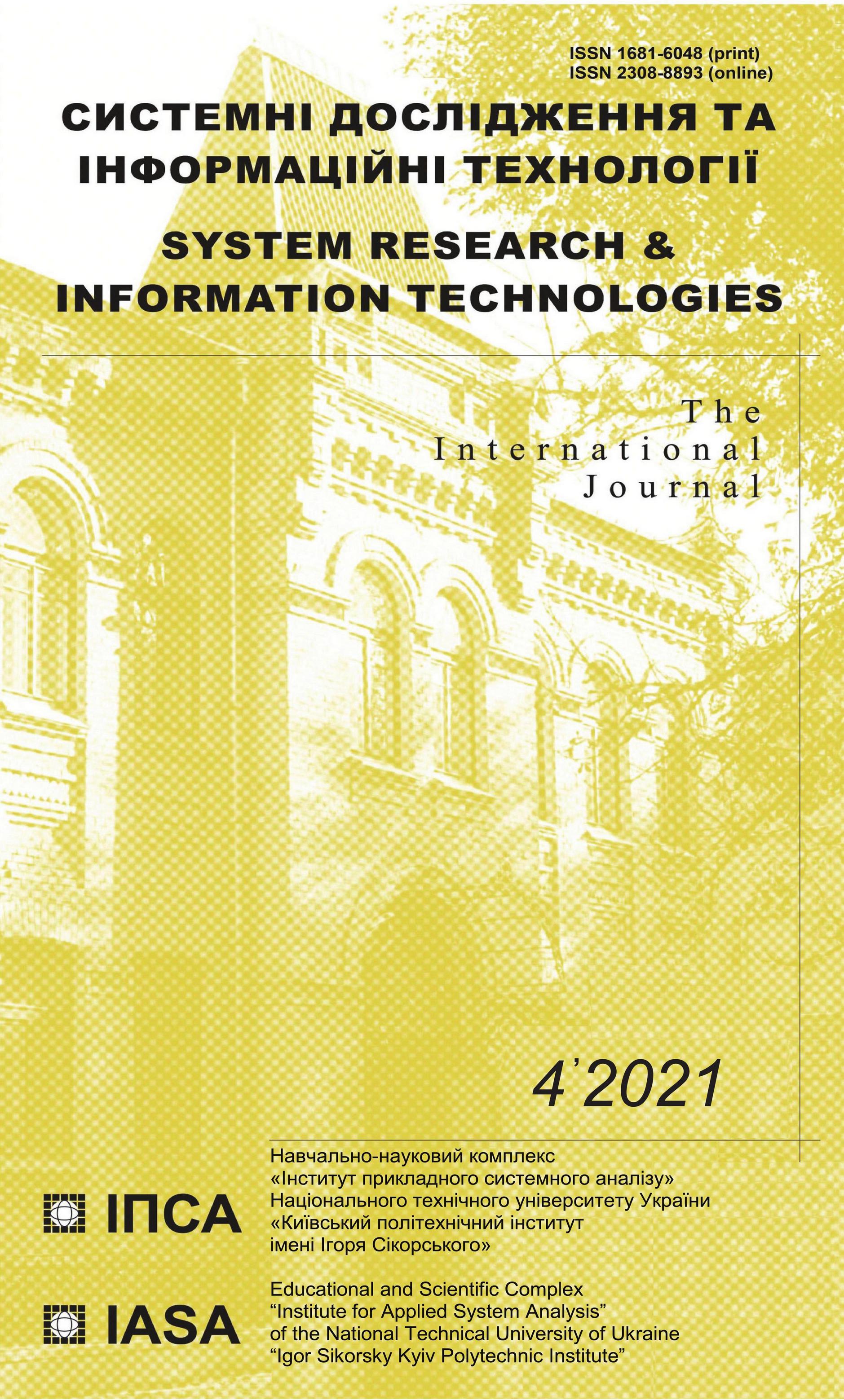Matrix multiple regression and modern biometric methods for prediction of biological indicators: examples
DOI:
https://doi.org/10.20535/SRIT.2308-8893.2021.4.06Keywords:
matrix multiple regression, methods of biometrics, biological indicators, prediction, singular-value decompositionAbstract
In this article, examples of prediction of biological indicators are considered. In this case, the classical methods of biometrics and methods based on matrix multiple regression are used. In order to solve the problem of estimation by the method of least squares for multiple matrix regression, a mathematical apparatus for the singular value decomposition (SVD) and pseudo-inversion technique for Moore–Penrose was used within the development of the concept of tuple operators. The empirical data for calculations were data from an experiment conducted at the Educational and Scientific Center “Institute of Biology and Medicine” (Taras Shevchenko National University of Kyiv). The calculations were made in Microsoft Office Excel and Wolfram Mathematica. The algorithm based on matrix multiple regression has the prediction accuracy in terms of the APE (absolute percentage error) criterion (the error is from 0% to 10%) higher than the accuracy of modern methods of biometrics (some errors are greater than 30%). As shown in the examples, matrix multiple regression can be an effective prediction instrument in biology with an acceptable planning processes accuracy.
References
O.H. Blyzniuchenko, Biometrics: monohraph, (in Ukrainian). Poltava: “Terra”, 2003, 346 p.
Biomedical statistics. [Online]. Available: http://www.biomedicalstatistics.info/en.
M.P. Horoshko, S.I. Myklush, and P.H. Khomiuk, Biometrics, (in Ukrainian). Lviv: Kamula, 2004, 285 p.
N.V. Kepchik, Mathematical methods in biology in the context of university education, (in Russian). [Online]. Available: https://bsu.by/Cache/pdf/96113.pdf.
A. Kizilova and I. Sbal`czarini, “Space-time modeling in biology”, (in Russian), Biomolecula, 2012. [Online]. Available: https://biomolecula.ru/articles/prostranstvenno-vremennoe-modelirovanie-v-biologii.
V. Donchenko, I. Nazaraga, and O. Tarasova, “Vectors and matrixes least square method: foundation and application examples”, International Journal Information Theories and Applications, vol. 20, no. 4, pp. 311–322, 2013.
V. Donchenko, I. Nazaraga, and O. Tarasova, “Matrixes least squares method: examples of its application in macroeconomics and TV-media business”, Eastern-European Journal of Enterprise Technologies, vol. 4, no. 4(70), pp. 42–46, 2014. doi: https://doi.org/10.15587/1729-4061.2014.26292.
V. Donchenko, T. Zinko, and F. Skotarenko, “Feature Vectors” in Grouping Information Problem in Applied Mathematics: Vectors and Matrixes”, in Proc. Int. Conf. Problems of Computer Intellectualization, Kyiv, Ukraine–Sofia, Bulgaria, 2012, pp. 111–124. [Online]. Available: http://foibg.com/ibs_isc/ibs-28/ibs-28-p13.pdf.
V. Donchenko and O. Tarasova, “Matrix multiple regression”, (in Ukrainian), Bulletin of Taras Shevchenko National University of Kyiv. Series: Physics and Mathematics, no. 2, pp. 133–138, 2015.
V. Donchenko, T. Zinko, and F. Skotarenko, “Cortege conception for linear operators and its implementation for matrix corteges”, (in Ukrainian), Journal of Computational and Applied Mathematics, no. 3 (120), pp. 127–140, 2015.
I. Nazaraha, “Predictions of macroeconomic indicators based on matrix multiple regression: examples”, System Research and Information Technologies, no. 1, pp. 119–131, 2018. doi: https://doi.org/10.20535/SRIT.2308-8893.2018.1.10.
A. Pasichnyk, V. Dmytryk, and Ya. Rayetska, “The effect of aqueous extract of Phaseolus Vulgaris pods on the some biochemical parameters in the conditions of esophagus burn of second degree in rats”, in Book of Abstr. of XIII Int. Scientific Conf. for Students and PhD Students Youth and Progress of Biology, Ukraine, Lviv, 25 – 27 April 2017, pp. 67–68.
Yana Raetska et al., “The effect of Phaseolus vulgaris pods extract on cytokines profile in the condition of alkali burn esophagus 2 degree”, Biomedical Research and Therapy, vol. 6, no. 9, pp. 3352–3358, 2019. [Online]. Available: http://www.bmrat.org/index.php/ BMRAT/article/view/563. doi: 10.15419/bmrat.v6i9.563
V.P. Storozhuket al., Theory of Statistics: Lecture Course, Part 1, (in Ukrainian). Ternopil: Ekonomichna dumka, 2006, 224 p.

